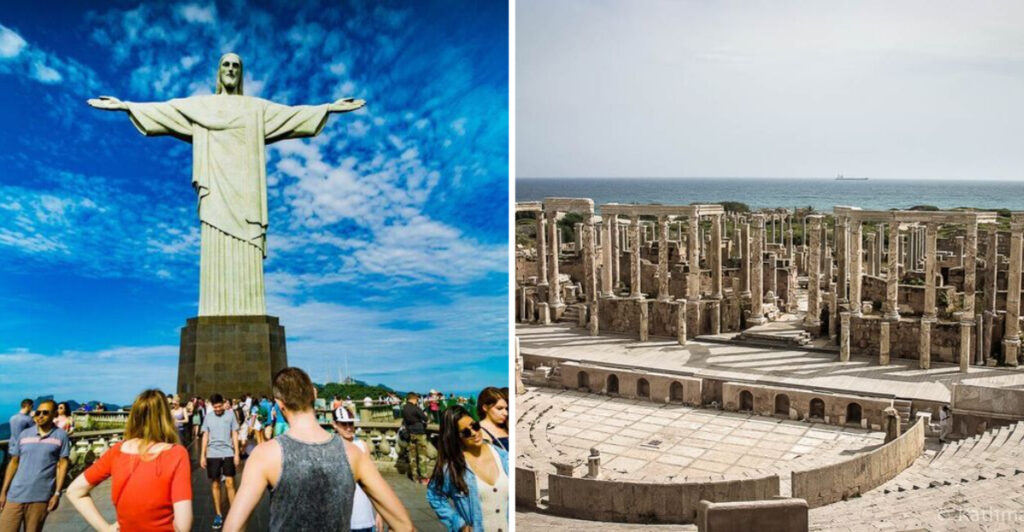Exploring ancient ruins can be an exhilarating adventure, but some popular sites are overrun by tourists, detracting from their historical allure. Here, we navigate through seven such tourist traps and guide you towards 19 hidden gems that promise a more intimate glimpse into history’s grandeur. From unspoiled archaeological sites to lesser-known marvels, these locations offer unique insights into the civilizations of the past, without the bustling crowds. Let’s embark on a journey to discover these hidden ancient wonders.
Stonehenge
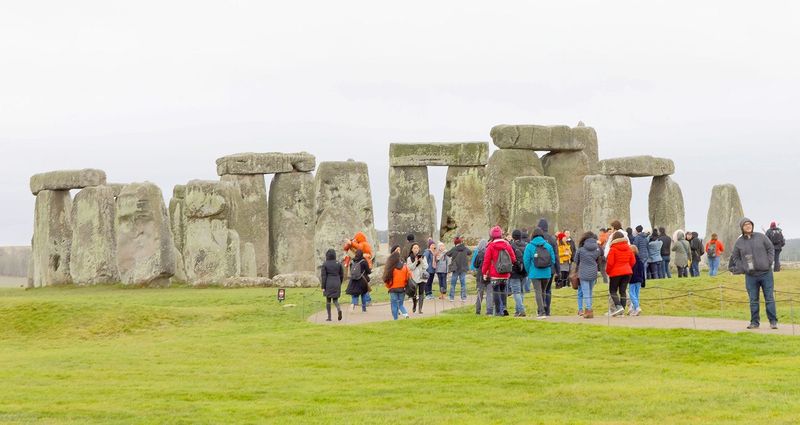
Stonehenge, with its iconic ring of standing stones, is often crowded with visitors, which can detract from its mystical ambiance. Located in Wiltshire, England, it’s one of the world’s most famous ancient sites but is often overrun with tourists vying for the perfect snapshot. The stones themselves, dating back to 3000 BC, are roped off, preventing close interaction. While its historical significance is unquestionable, the bustling crowds and commercialism can overshadow the serene experience one might expect from such a mystical place. Consider visiting other ancient sites for a more tranquil experience.
Chichen Itza

Chichen Itza is a magnificent testament to the Mayan civilization, boasting the awe-inspiring Pyramid of Kukulkan. However, as a UNESCO World Heritage site, it draws throngs of tourists, making quiet contemplation challenging. Situated in Mexico’s Yucatán Peninsula, the site is a marvel of ancient engineering and astronomy. Yet, its popularity means it’s often bustling, with vendors selling trinkets and tourists snapping endless photos. While its historical richness is immense, the overwhelming number of visitors can detract from its majestic solitude. Exploring lesser-known Mayan sites might offer a more peaceful experience.
Colosseum
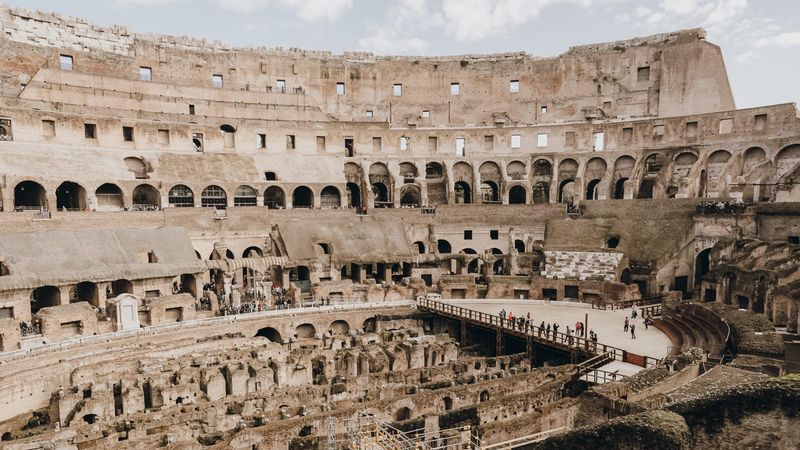
The Colosseum in Rome stands as a symbol of the grandeur and brutality of ancient Roman entertainment. Its impressive scale and history attract visitors worldwide, leading to long lines and crowded tours. This amphitheater, capable of holding thousands, once hosted gladiatorial contests and public spectacles. However, the modern-day influx of tourists can dilute its historical impact, as commercial activities and guided tours dominate the site. For those seeking to connect more intimately with Roman history, exploring less-visited ruins across Italy may provide a more personal and reflective experience.
Machu Picchu
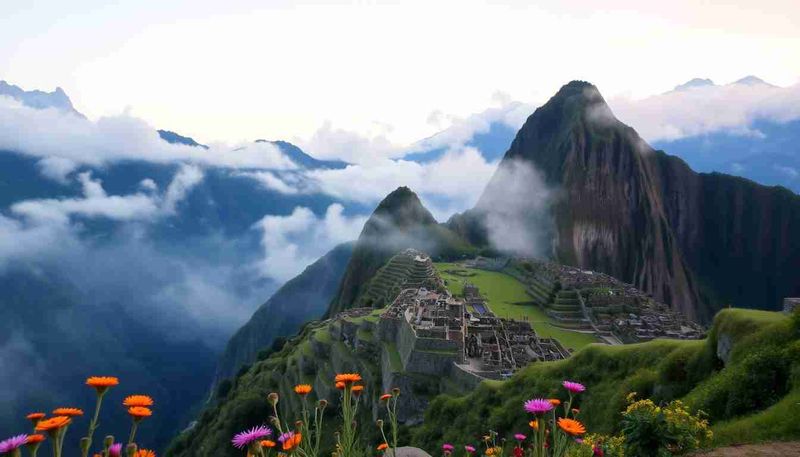
Machu Picchu, an Incan citadel nestled high in the Andes Mountains of Peru, is renowned for its breathtaking views and architectural genius. However, its fame draws countless tourists, especially during peak seasons, creating a bustling atmosphere. With guided tours and trekking groups, the sense of solitude and mystique that once enveloped this ancient wonder can be lost. The site’s preservation efforts further restrict areas accessible to the public. To truly savor the Incan culture, consider exploring lesser-known trails and ruins around Cusco, which offer serenity and historical depth.
Christ the Redeemer

Overlooking Rio de Janeiro, Christ the Redeemer is an iconic symbol of Brazil, drawing visitors from all corners of the globe. While its panoramic views are undeniably spectacular, the constant influx of tourists can make the experience feel rushed and crowded. Standing at 98 feet tall, this Art Deco statue is a marvel, but the surrounding platform is often packed with people capturing the moment. Visiting early morning or during off-peak times might offer a quieter experience, but exploring other cultural landmarks in Brazil can provide a more authentic visit.
Taj Mahal
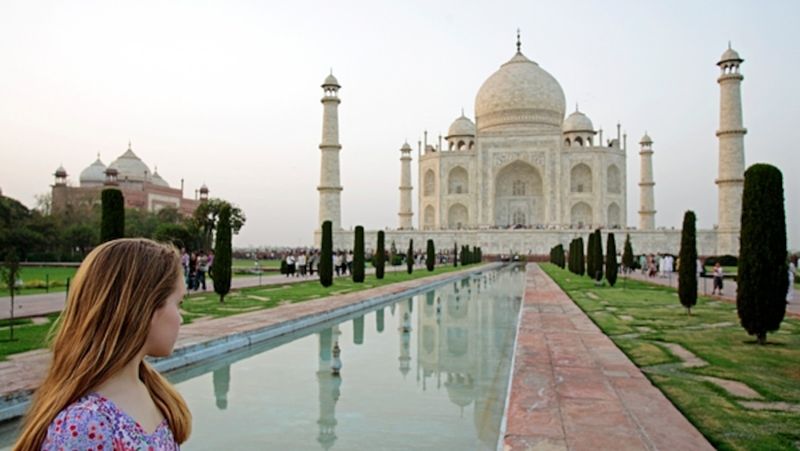
The Taj Mahal in India is a monument to love and an architectural masterpiece, but its beauty is often overshadowed by throngs of tourists. With its majestic white marble and intricate designs, it’s no wonder this UNESCO site is a global attraction. However, the serenity intended by its creators can be hard to find amidst the bustling crowds and constant photography. Visiting during off-peak hours might offer some respite, but to experience Mughal architecture in a more peaceful setting, lesser-known sites in Agra or Delhi might be more rewarding.
Great Wall of China

The Great Wall of China, with its sprawling fortifications, is an enduring symbol of ancient ingenuity and defense. However, popular sections such as Badaling are often packed with tourists, making a leisurely walk feel more like a slow shuffle. The history embedded in its stones is profound, yet the constant presence of large tour groups and vendors can detract from the experience. For those seeking to appreciate the wall’s grandeur without the crowds, exploring lesser-known sections might offer the tranquility and historical connection desired.
Hattusa
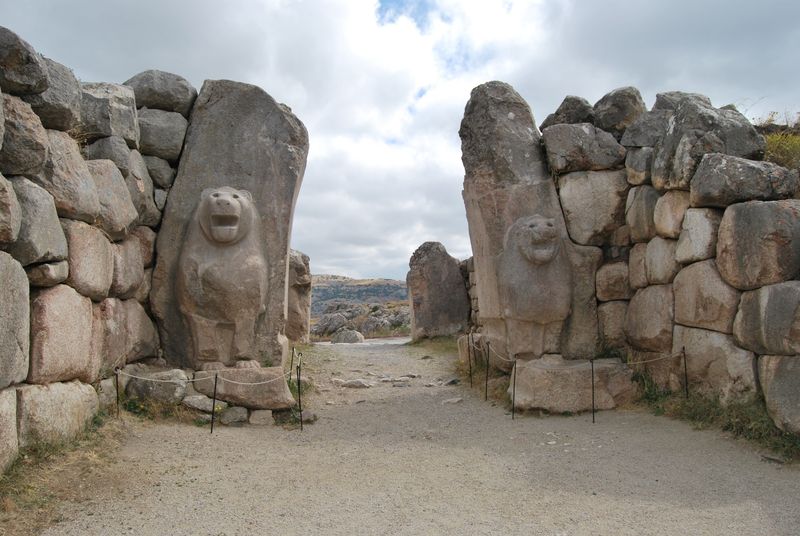
Hattusa, the ancient capital of the Hittite Empire in modern-day Turkey, offers a glimpse into a powerful civilization’s past with minimal crowds. Its well-preserved ruins include city walls, gates, and temples that echo the grandeur of an empire that once rivaled Egypt. Unlike more famous sites, Hattusa remains relatively undiscovered by mass tourism, allowing visitors to explore its history in peace. The stunning landscape surrounding the site enhances its allure, providing a serene backdrop to this archaeological treasure. Discovering Hattusa offers an authentic journey into history, unmarred by bustling tourist activity.
Tiwanaku
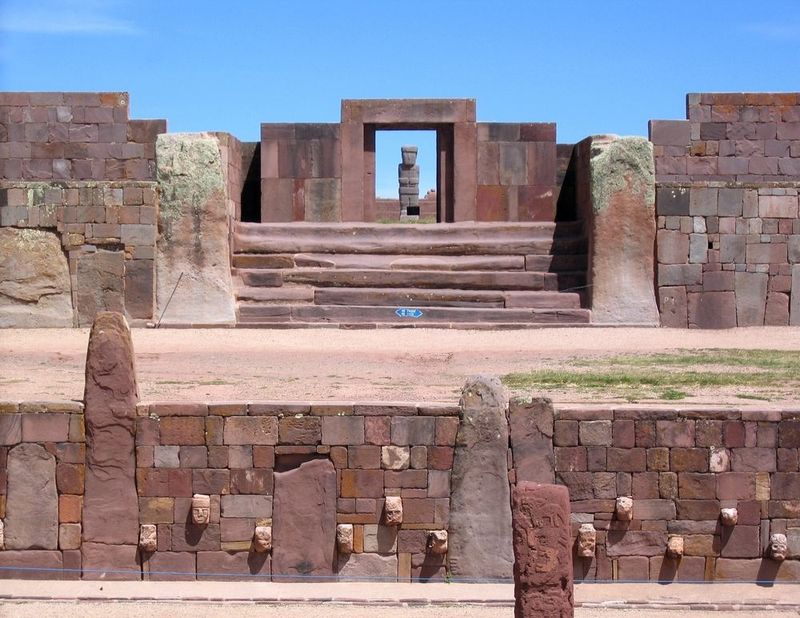
Tiwanaku, located in Bolivia, is a lesser-known archaeological site that was once the center of a powerful pre-Columbian empire. The impressive stone structures, including the iconic Gateway of the Sun, reveal advanced engineering and cultural sophistication. Unlike the more frequented ruins, Tiwanaku offers a tranquil atmosphere, allowing for reflection on the mysteries of this ancient culture. The surrounding highland plains and distant Andes mountains provide a breathtaking setting for exploration. Visiting Tiwanaku invites a deeper understanding of South America’s rich history, away from the crowds that populate more famous sites.
Teotihuacan

Teotihuacan, known as the City of the Gods, is a sprawling archaeological complex near Mexico City. Although it is a popular site, visiting early in the morning allows for a more intimate experience. The Pyramid of the Sun and the Pyramid of the Moon are architectural marvels that dominate the landscape, providing insight into one of the most significant pre-Hispanic civilizations. The long Avenue of the Dead and well-preserved murals add to the site’s allure. Exploring Teotihuacan at dawn can offer a serene and awe-inspiring journey through ancient history.
Petra
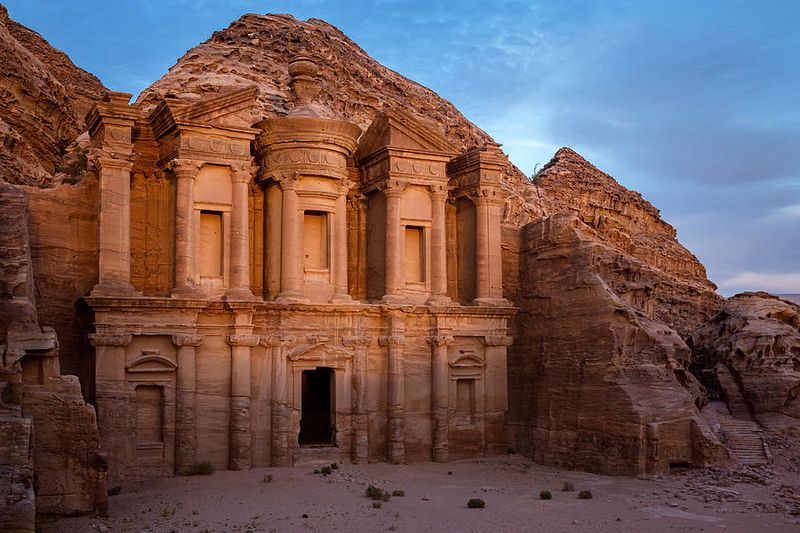
Petra, the rose-red city of the Nabataeans, is famous for its rock-cut architecture and vibrant history. While it attracts many visitors, timing your visit for late afternoon or early evening can enhance the experience. The iconic Treasury, carved into sheer rock faces, is best appreciated when the crowds have thinned, allowing you to absorb its majestic beauty. Wandering through the Siq, the narrow gorge leading to Petra, is a journey through time, revealing the ingenuity of its ancient builders. Discovering Petra in the quiet hours offers a unique and personal connection to its storied past.
Baalbek
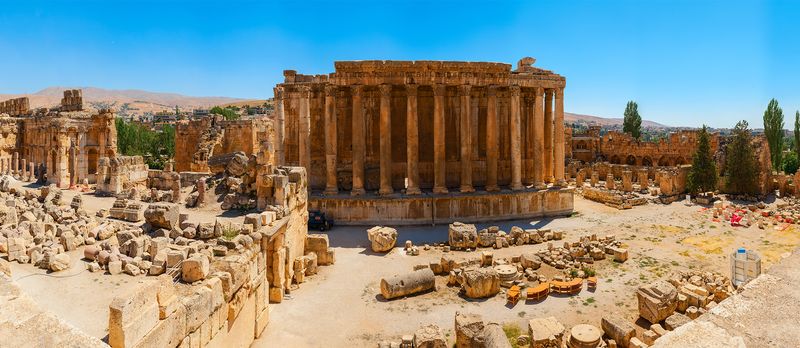
Baalbek, located in Lebanon’s Beqaa Valley, boasts some of the largest Roman temple ruins in the world. Despite its grandeur, it remains relatively uncrowded compared to more famous sites. The monumental remains, including the Temple of Bacchus, showcase stunning architectural achievements and are a testament to Roman engineering prowess. Surrounded by mountains, Baalbek’s serene environment enhances the experience, allowing visitors to ponder the history of this ancient city in peace. Exploring Baalbek offers a glimpse into the splendor of ancient Rome away from the commercialism seen in more popular attractions.
Herculaneum
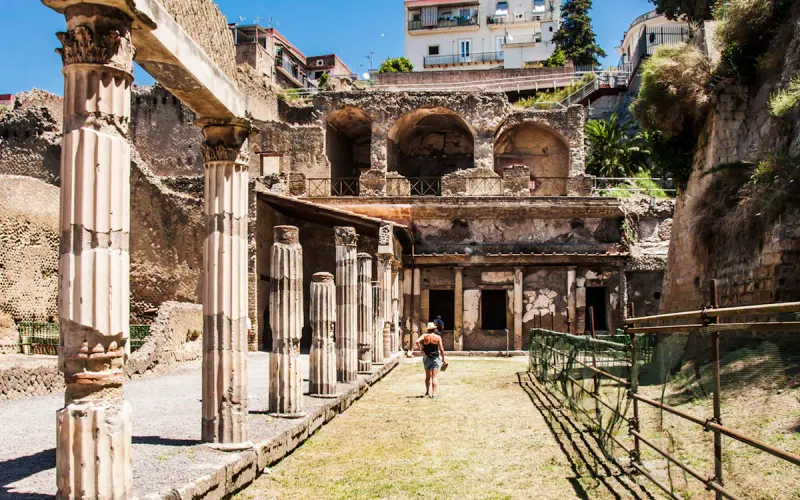
Herculaneum, overshadowed by its more famous neighbor Pompeii, offers an intimate look at Roman life preserved by the eruption of Mount Vesuvius. Unlike the bustling crowds of Pompeii, Herculaneum is often quieter, providing a more personal exploration of its remarkably preserved buildings, mosaics, and frescoes. The site’s smaller size and detailed preservation allow for a deeper understanding of Roman domestic life. Exploring Herculaneum is like stepping back in time, where every corner reveals insights into the daily lives of its ancient inhabitants, unspoiled by the throngs of tourists.
Choquequirao
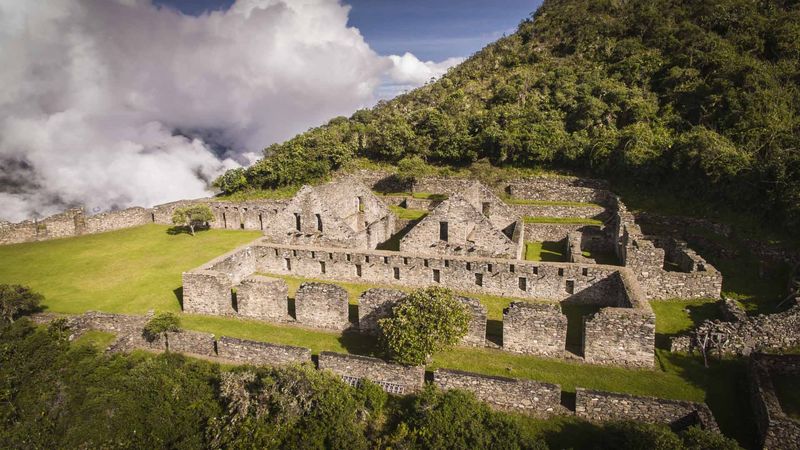
Choquequirao, often referred to as Machu Picchu’s sister city, offers a remote and tranquil exploration of Incan history. Nestled high in the Peruvian Andes, it is accessible only by a challenging trek, deterring large numbers of tourists. The site’s terraces, ceremonial areas, and stunning views provide a rewarding experience for those willing to make the journey. Due to its location, Choquequirao remains uncrowded, allowing for a solitary and reflective exploration of its mysteries. This hidden gem promises an unforgettable adventure into the heart of ancient Peru, unmarred by the distractions of mass tourism.
Ugarit
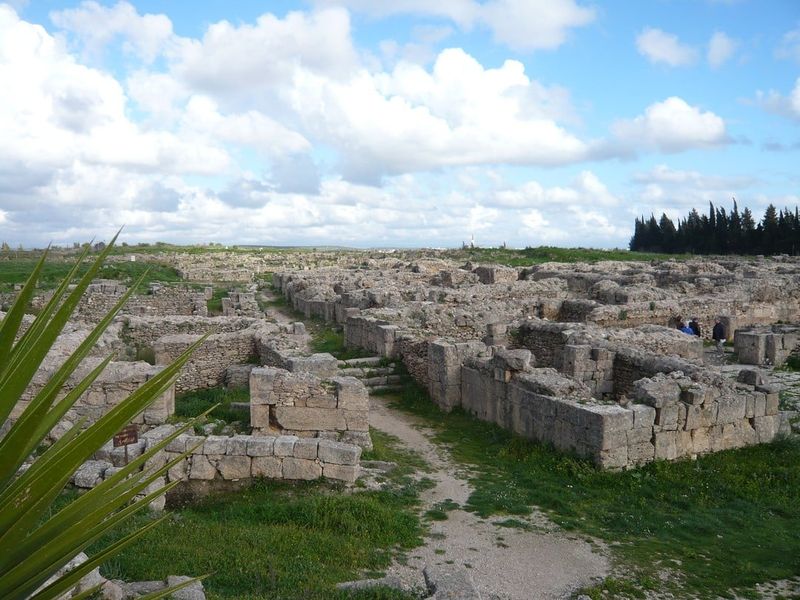
Ugarit, an ancient port city in modern-day Syria, offers a quiet escape into the historical roots of civilization. Known for its role in developing the Ugaritic alphabet, the city’s ruins, including palaces and temples, are often devoid of tourists. The coastal setting enhances the experience, providing a peaceful backdrop to contemplate the city’s historical significance. Ugarit’s ruins tell stories of trade, religion, and innovation during the Bronze Age. Exploring this lesser-known site allows for a personal dive into ancient history, away from the commercialism often found at more popular ruins.
Leptis Magna
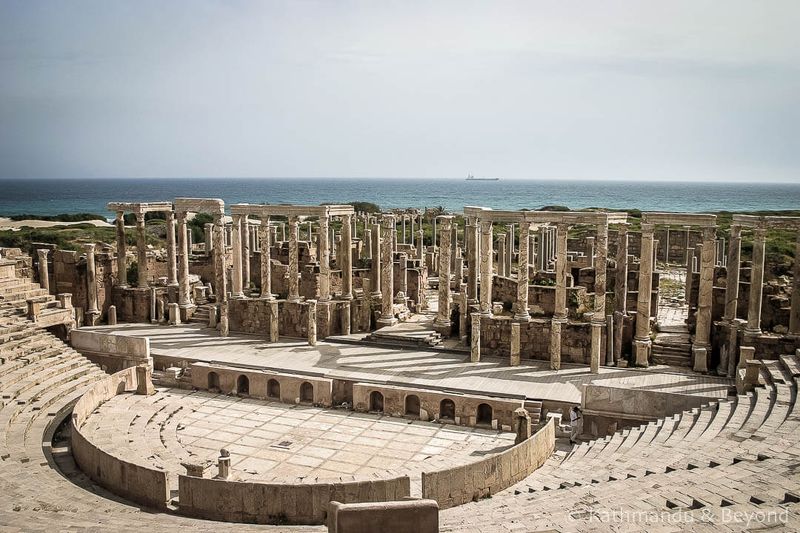
Leptis Magna, located in Libya, is one of the best-preserved Roman cities in the Mediterranean. Its expansive ruins, including a grand amphitheater, baths, and a basilica, offer a glimpse into the grandeur of Roman urban life. Despite its historical significance, it remains largely undiscovered by mass tourism, allowing for a peaceful exploration. The site’s location along the Mediterranean coast adds to its allure, providing stunning views that complement the ancient architecture. Visiting Leptis Magna offers an opportunity to stroll through history without the interference of large tourist groups.
Sigiriya
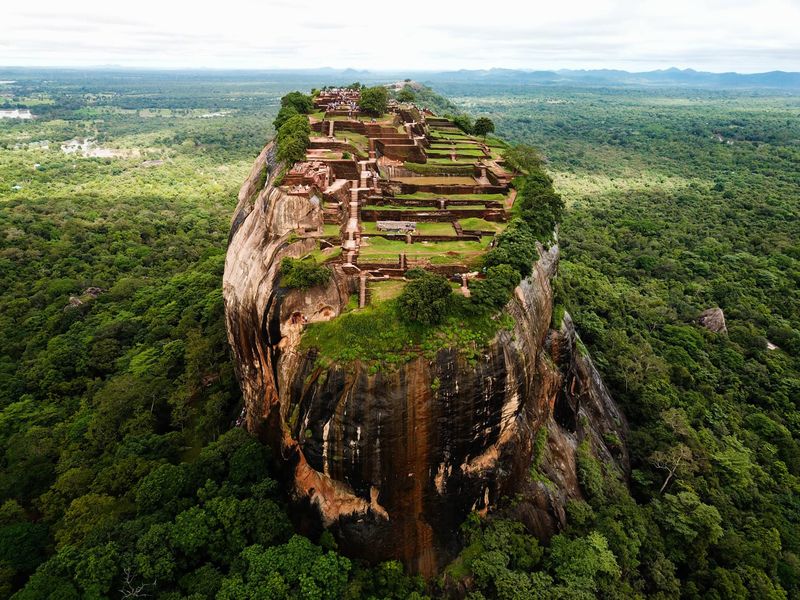
Sigiriya, a rock fortress in Sri Lanka, stands majestically above the surrounding landscape. Known as Lion Rock, this ancient architectural wonder features frescoes, gardens, and a mirror wall. While it can attract tourists, visiting during off-peak times offers a more serene experience. Climbing to the summit rewards with panoramic views and a sense of accomplishment. The ingenuity of its construction and its cultural significance make Sigiriya a fascinating destination. Exploring this site, with its peaceful ambiance and breathtaking views, provides an insightful journey into Sri Lanka’s rich heritage.
Tikal
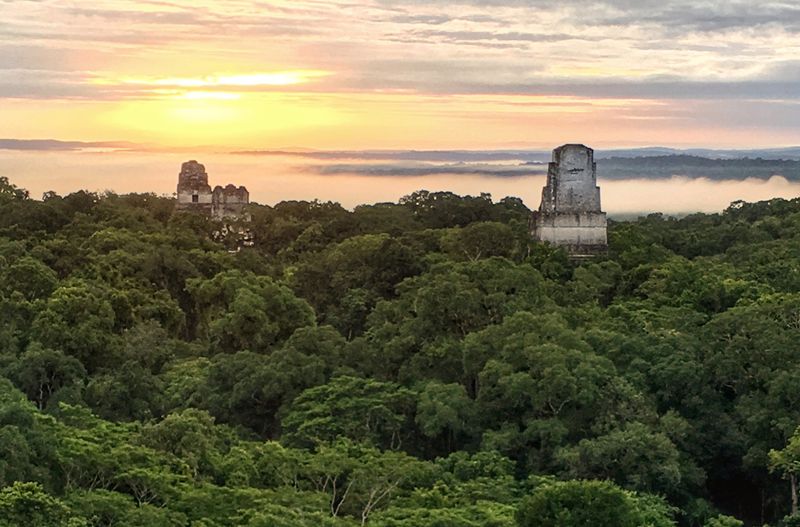
Tikal, nestled in the dense rainforests of Guatemala, is a magnificent example of Mayan civilization. Its towering pyramids and expansive plazas evoke a sense of awe and wonder. While it is a popular tourist destination, visiting during quieter seasons can provide a more intimate experience. The sounds of the jungle envelop the ruins, enhancing the mystical atmosphere. Exploring Tikal offers a unique opportunity to immerse oneself in the ancient world, surrounded by nature and far from the bustling crowds. This hidden gem offers a profound connection to the past.
Ani

Ani, once a bustling medieval city on the Silk Road, is now a hauntingly beautiful ruin on the Turkish-Armenian border. Known as the “City of 1001 Churches,” Ani’s architectural remnants, including cathedrals and fortifications, tell stories of its former glory. Its remote location ensures that it remains largely free from the tourist crowds. The windswept plateau and sweeping vistas create a dramatic setting for exploration. Visiting Ani offers a unique historical journey, where one can wander through the echoes of the past in solitude, reflecting on the city’s rich cultural heritage.
Great Zimbabwe
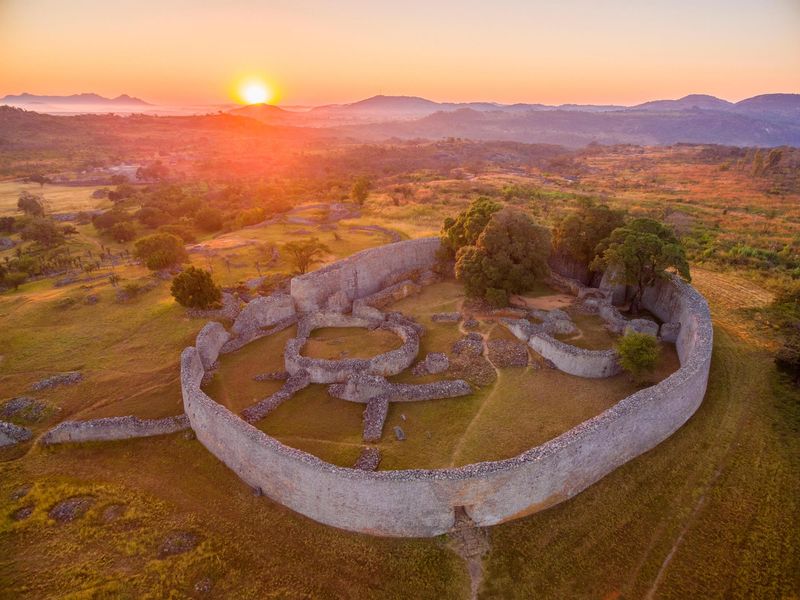
Great Zimbabwe, an ancient city in southern Africa, is renowned for its impressive stone structures and historical significance. The Great Enclosure, with its massive walls, showcases the ingenuity of the Shona civilization. Despite its status as a UNESCO World Heritage site, it is often overlooked by tourists. This allows for a quiet and contemplative visit, where one can explore the ruins and imagine the bustling life that once thrived there. The expansive site provides ample opportunity for discovery and reflection, offering a profound connection to African history.
Mesa Verde
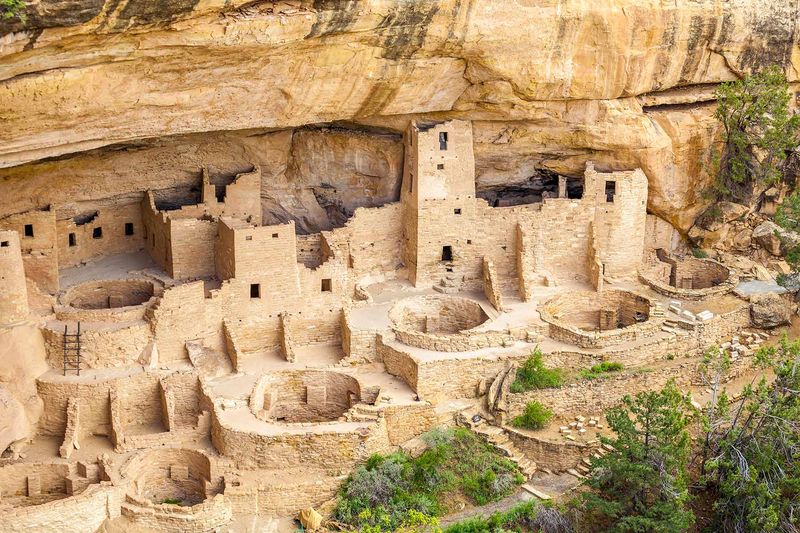
Mesa Verde, in the southwestern United States, offers a glimpse into the ancient Puebloan culture with its remarkable cliff dwellings. The site’s remote location in Colorado ensures that it remains relatively free from the heavy tourist traffic seen at other historical sites. Visitors can explore the well-preserved structures, nestled in the cliffs, and learn about the daily lives and cultural achievements of the Ancestral Puebloans. The surrounding desert landscape adds to the site’s allure, providing a serene and scenic backdrop. Mesa Verde offers a unique journey into Native American history.
Derinkuyu Underground City
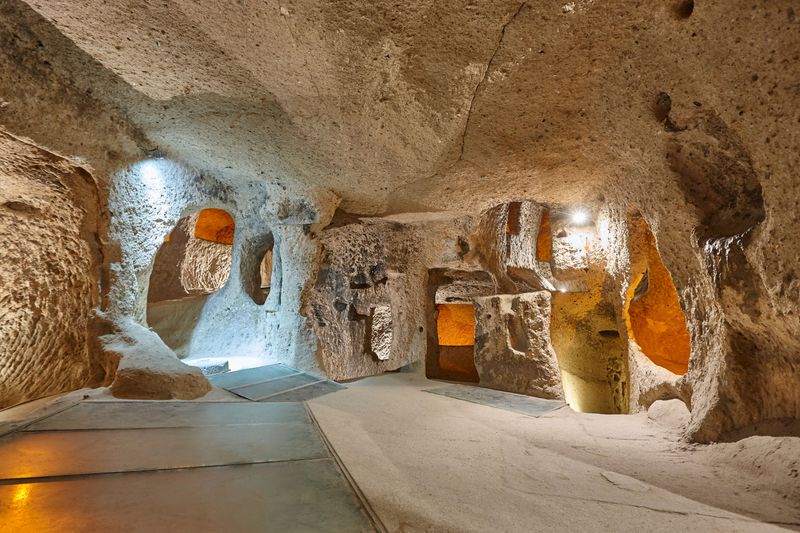
Derinkuyu, an ancient multi-level underground city in Turkey, offers a fascinating exploration of human ingenuity and resilience. Carved into volcanic rock, this subterranean marvel once sheltered thousands during times of conflict. The city’s intricate tunnels, rooms, and ventilation systems reveal advanced engineering skills. Despite its historical significance, Derinkuyu is less frequented than more famous sites, allowing for an intimate exploration of its depths. Walking through its dimly lit passages provides a sense of wonder and curiosity, offering a unique glimpse into the lives of those who once inhabited this underground refuge.
Gjirokastër
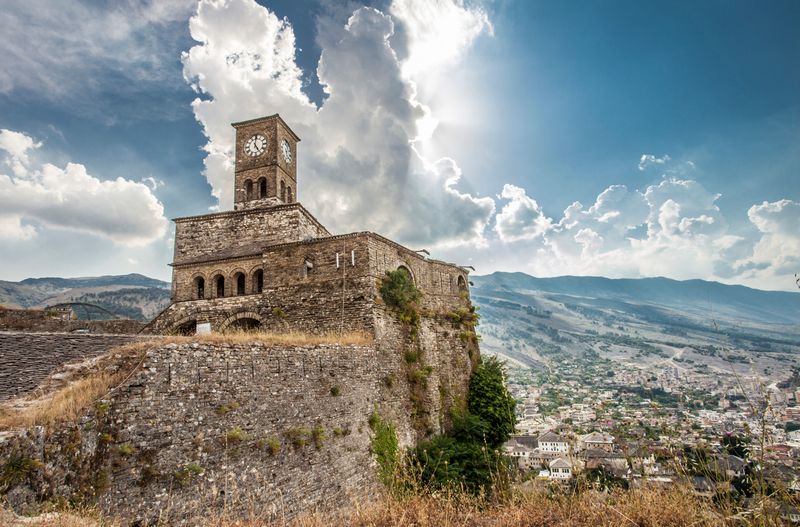
Gjirokastër, a UNESCO World Heritage site in Albania, is known for its well-preserved Ottoman-era architecture. The city’s stone houses and fortress dominate the hillside, offering a journey through time. Despite its historical charm, it remains off the beaten path, providing a tranquil exploration away from the tourist crowds. Walking through its cobbled streets, visitors can admire the blend of history and culture that defines Gjirokastër. The city’s unique architectural style and scenic setting make it a captivating destination for those seeking a more intimate historical experience.
Bagan

Bagan, with its thousands of ancient temples and pagodas, is a testament to the splendor of Myanmar’s past. Although it attracts many visitors, the vastness of the area allows for moments of peaceful exploration. Watching the sunrise over the temples from a hot air balloon offers a breathtaking view that few places can match. The intricate architecture and spiritual ambiance of Bagan provide a profound connection to history. Exploring this vast site invites contemplation and discovery, far removed from the hustle and bustle of more crowded historical destinations.
Lalibela
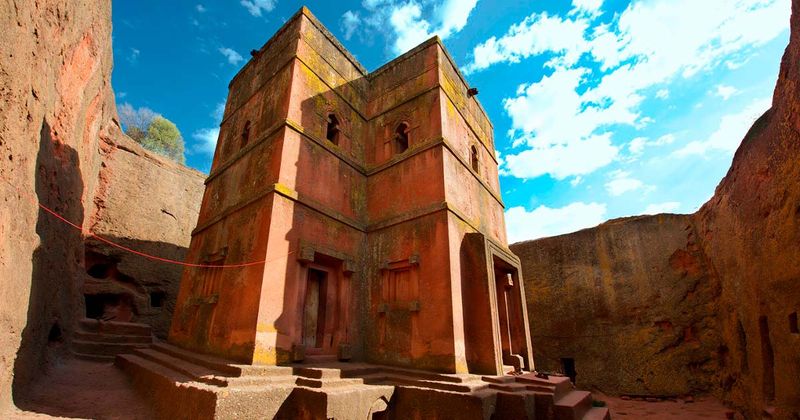
Lalibela, in the highlands of Ethiopia, is renowned for its rock-hewn churches, carved directly into the rocky hillsides. This spiritual site, often considered a “New Jerusalem,” attracts pilgrims and travelers alike. Its remote location ensures a quieter visit compared to more accessible sites. The churches, with their intricate carvings and religious significance, offer a profound insight into Ethiopian Orthodox Christianity. Exploring Lalibela provides a spiritual journey through history, where the serenity of the landscape complements the solemnity of the churches. This hidden gem offers a unique and reflective experience.

